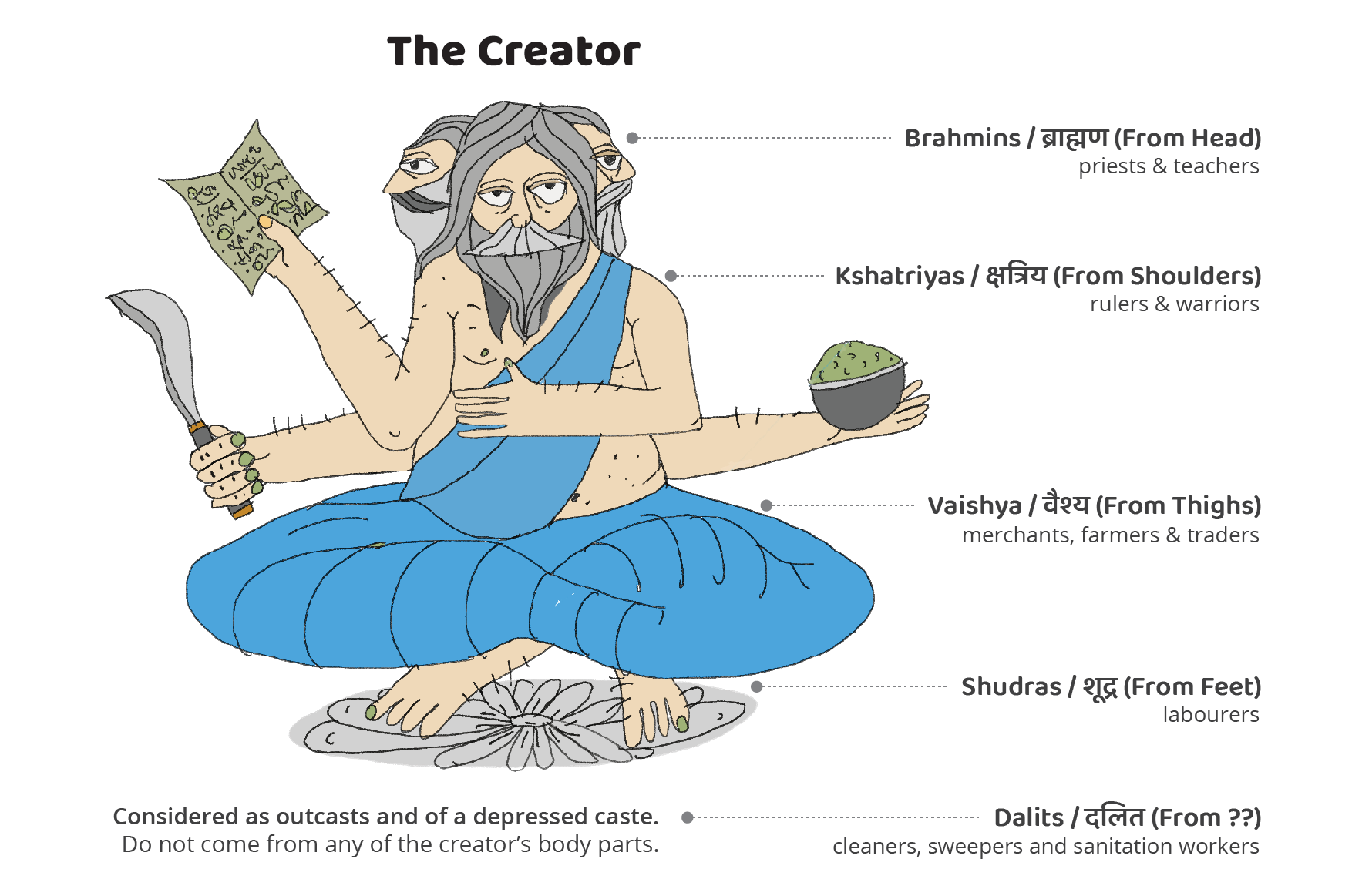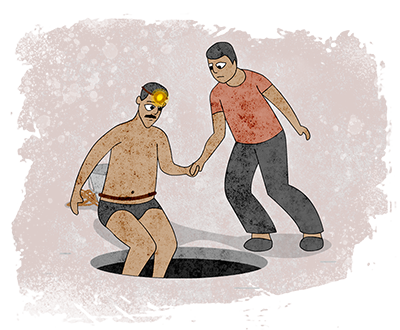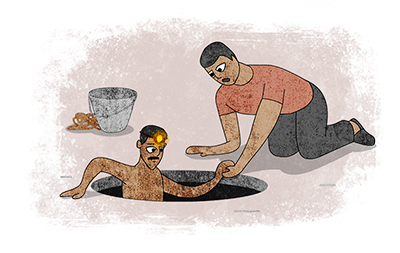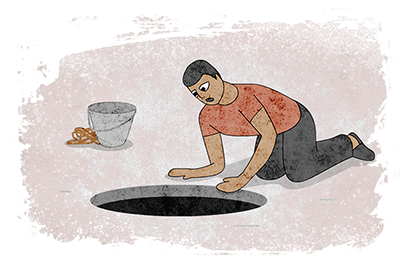Background
“The caste system in the Indian society is related to the idea of lineage or kinship group. A person’s caste is inherited by birth and can never be changed in one’s life.”

Manual Scavenging
Manual scavenging is the occupation of sanitation work in India, involving manually cleaning and disposing of human excreta from public streets, insanitary dry latrines, septic tanks, gutters, sewers, or more often inside a street manhole.
But the question that faces every person embodying a basic sense of humanity is- why is it that such an inhumane practice, despite being barred by law, continues to persist commonly? The answers are not simple but complexly tied down to caste-identities.

Why does it still prevail?
Dipankar Gupta, a renowned contemporary sociologist, offers an explanation. According to him, it is not simply a consequence of a singular caste hierarchy. India is a federation of caste-communities living in multiple competing hierarchies, each having a sense of pride towards their community. But one of the major reasons for the marginalization of castes, on the account of Prof. Gupta, is the perception of dirt in India and especially that within the Hindu society. Hindu conceptions of dirt draw their fundamental justifications from deeply ingrained notions of caste. According to which,
- All routine principles which come out of one’s body like perspiration, excreta, and menstrual blood are polluting even to oneself.
- However, paradoxically, once the dirt leaves the scrupulously clean home, it ceases to be a matter of hygiene concern.
- The notion of ‘dirt’ or ‘pollutants’, after leaving the body and the household, gets prejudicially tied to the castes whose occupation is to deal with them directly.
- The traditional roles of the barber, washerman, and scavengers were precisely to absorb specific pollutants so that members of the upper castes could remain clean.
Untouchability crept its way into Indian society, marginalizing lower caste-identities and eventually creating a depressed class crushed under the weight of inhuman practices.

Few Notable Points
- The 2013 act, which criminalized the practice and employability of manual scavenging, lays down rules and procedures for the rehabilitation of manual scavengers through training in alternate employment, financial help, and help with purchasing the property.
- As per the officials responsible for identifying the manual scavengers, the act recognizes that every local authority (municipality or panchayat), cantonment board, and railway authority is responsible for surveying its area to identify manual scavengers
- Yet the act allows for ‘non-hazardous cleaning’ by mandating that the person who is getting the job done must provide the cleaner with ‘protective gear’
- However, requirements of an oxygen cylinder, torches, and constant monitoring of workers through computers, etc. are not mentioned in the act and hence are not provided to the cleaners. This has led to the prevalence of old conditions in many parts of the country.
- Despite the law, for a country as large and densely populated as India, any change, as Mahatma Gandhi professed, could come only from within. Such a consciousness of change has not yet penetrated the minds of common Indians who still practice caste-based occupations and are habituated to old laws of employing labor, making them indifferent towards such inhumane practices.

Gandhi-Ambedkar on Caste
Mahatma Gandhi and B.R. Ambedkar were two of the many leading figures, who worked differently towards solving the problem of caste in India. For Ambedkar, caste was a political problem while for Gandhi it was a social one.
Baba Saheb Ambedkar fought his entire life for changing the conditions of Dalit community. He writes, “Caste is a state of mind. It is a disease of mind. The teachings of Hindu religion are the root cause of this disease. We practice casteism and observe untouchability because we are enjoined by Hindu religion.”
While Ambedkar was the pioneer in empowering the voices of the Dalit community by granting them unique political representation and legal status in Indian society, Mahatma Gandhi’s methods were different and more socio-psychological.
Gandhi Ji spent significant time in his life cleaning dry latrines himself as a matter of spiritual practice. Whosoever volunteered to work at his ashram would first be given the task of cleaning the latrine. “We are all Shudras and if we can bring ourselves to believe this, the merger of the Harijans in Savarana Hindus becomes incredibly simple and in course of time, we might be able to reconstruct the old varnas.” In this way, Gandhi Ji wanted to radically tweak the upper caste consciousness and their perception of dirt, by making them embrace it.
However, neither Ambedkar nor Gandhi were fully successful in their work of social change with respect to caste. Yet, their contributions and ideas are with us today, inspiring us to strive towards ending the inhumane social injustices persisting in India.
